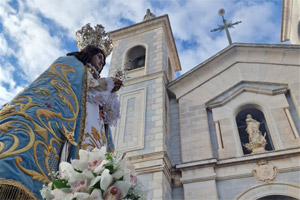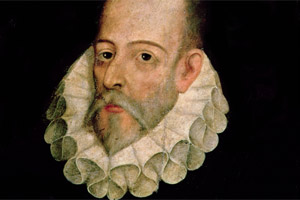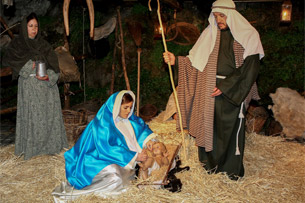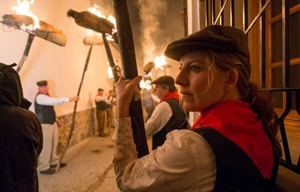Sant Antoni festivities in Barcelona
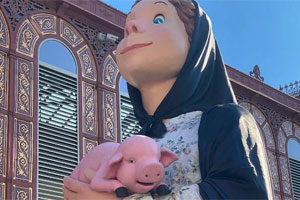
Come to Barcelona's Sant Antoni neighbourhood to discover the best of Barcelona's popular culture and tradition. The Sant Antoni Festivities are held in Barcelona. You'll enjoy a great few days with music, theatre, sports, games and much more!
What will you find at the Sant Antoni Festival in Barcelona?
The Sant Antoni Festivities in Barcelona take place in the Sant Antoni neighbourhood (Barcelona), in commemoration of Sant Antoni Abad. This great traditional and family celebration, organised by the Neighbourhood Association of Sant Antoni, has a popular entourage, composed of:
- The giants of the neighbourhood (Tonet and Rita), the backpack giants of the market (Sisquet, Rosa, Amador and Mingu).
- The big-heads of the Sant Antoni neighbourhood association.
- The gegantera family of the Colonies.
- La Porca, a bonfire beast that represents the animal that accompanied Saint Anthony.
- The Castellers of Poble-sec.
- The Trabucs de Sant Antoni.
- La Colla de Xamfrà.
People of all ages come to enjoy an entertaining programme over several days, which includes traditional dances (les sardanes), the parade of Els Tres Tombs, giants, correfocs and much more.
How is Saint Anton's Day celebrated in this Barcelona neighbourhood?
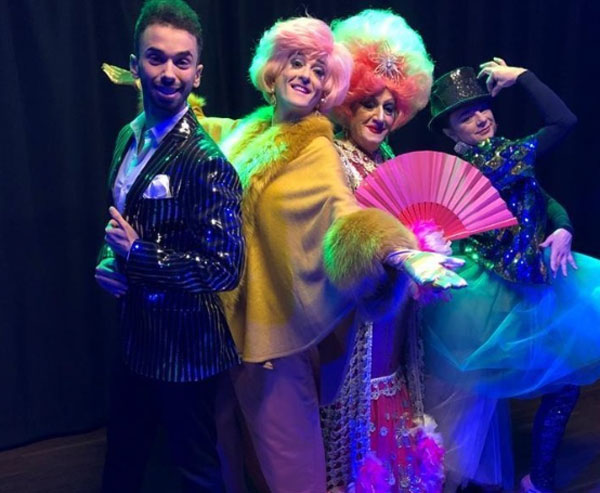
During the celebration of the Sant Antoni Festivities in Barcelona, various activities take place during a week, dedicated to children, young people and adults, such as the following:
- Cavalcade of the Three Tombs (three turns, in Catalan). This is the most significant event of these festivities, whose name is related to the number of times the procession used to go round the neighbourhood. They perform a traditional parade through the city centre. This parade includes horseback riding squads, lancers from the Guardia Urbana, horsemen and a parade of period carriages.
- Musical concerts.
- Parades.
- Correfocs.
- Blessing dedicated to pets.
- Popular race.
Origins of the Sant Antoni festivities in Barcelona
The origins of the festival of Sant Antoni date back to a pagan festival that was celebrated during the winter solstice, with the aim of ensuring the provision of sunshine and promoting the fertility of the land.
Later, these festivities were influenced by Christianity when the figure of Sant Antoni, patron saint of animals and protector of crops, was introduced. Nowadays, the festivities include the participation of demons who dance masked over the fire in an attempt to pervert and tempt the saint.
Recommendations for visitors to the Sant Antoni festivities in Barcelona
If you want to make the most of these festivities, here are some recommendations and practical tips:
- Wear cotton clothes with long sleeves and trousers, comfortable sports shoes.
- Do not park vehicles in the area where the parade of fire will circulate.
- Children must be accompanied by an adult.
- Protect your eyes and cover your ears to reduce the noise of the pyrotechnic explosions.
- Do not bring your own pyrotechnics, only those prepared by the organisers will be used.
- In case of burns, go to one of the medical assistance points located in the area of the event.
- The event has Purple Points of assistance, to request help in cases of violence and aggressions due to gender discrimination.
What else can you see or do in the city if you go to Barcelona?
Barcelona has a lot to see and visit, so depending on the time you have you can enjoy the city. We recommend this selection of places:
- Picasso Museum of Barcelona: it is located in the Gothic Quarter. It has a collection of 4.249 works of the iconic artist from Malaga.
- Passeig de Gracia: it is an avenue of the Catalan capital that reflects a modernist architecture. Casa Batlló and La Pedrera or Casa Milá, among other buildings, stand out.
- Barceloneta Promenade: it has idyllic beaches, the Clock Tower and the Museum of the History of Catalonia.
- Sagrada Familia Cathedral: it is one of the most famous architectural buildings in Barcelona. It was built in 1883 and has been declared a World Heritage Site by UNESCO. It has three main façades: the Nativity, the Passion and the Resurrection of Christ.
- Park Güell: located in the upper part of Barcelona. It has a naturalistic architecture that makes it attractive for its colours and shapes.
Gastronomy in Barcelona
We invite you to taste the following traditional dishes of Barcelona, very delicious:
- Butifarra: a type of thick sausage, made with pork, seasoned in different ways. It can be eaten raw, fried or grilled.
- Escalivada: prepared with aubergines, peppers, potatoes, onions, roasted tomatoes, garlic and black olives.
- Black rice: typical dish from the Catalan Costa Brava, prepared with seafood, cuttlefish, garlic and onion.
- Crema catalana: a traditional dessert made with egg yolk, sugar, wheat or corn flour, lemon or orange peel and milk flavoured with cinnamon.
- Esqueixada de Bacallà: a dish prepared with cod, chopped tomatoes, olives, pepper, seasoned with olive oil, salt and vinegar.
Share images, videos and interesting information about the Sant Antoni Festival in Barcelona on social networks. Use the hashtags #FMSA23 #FMSANTANTANTONI23 #Barcelona.

